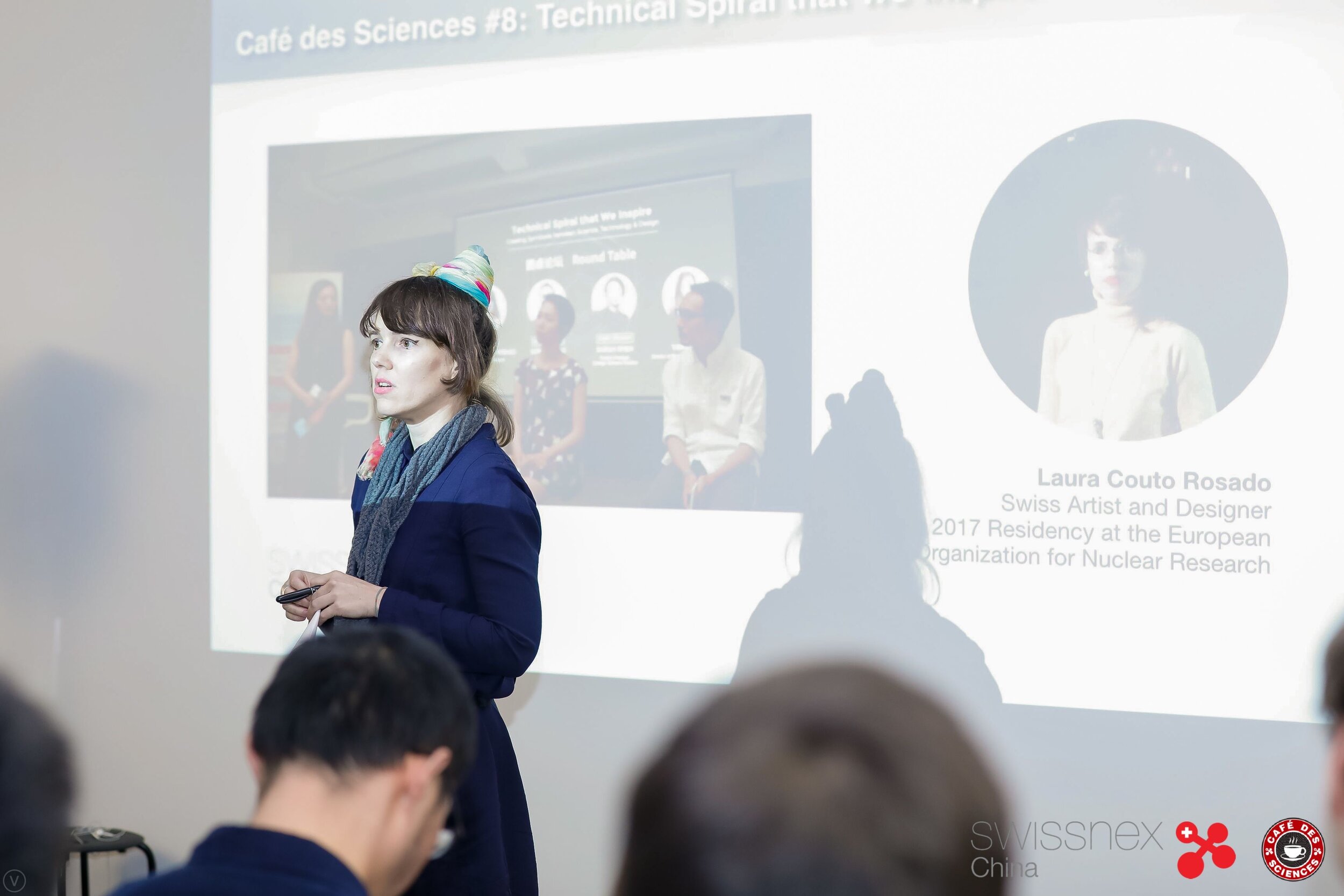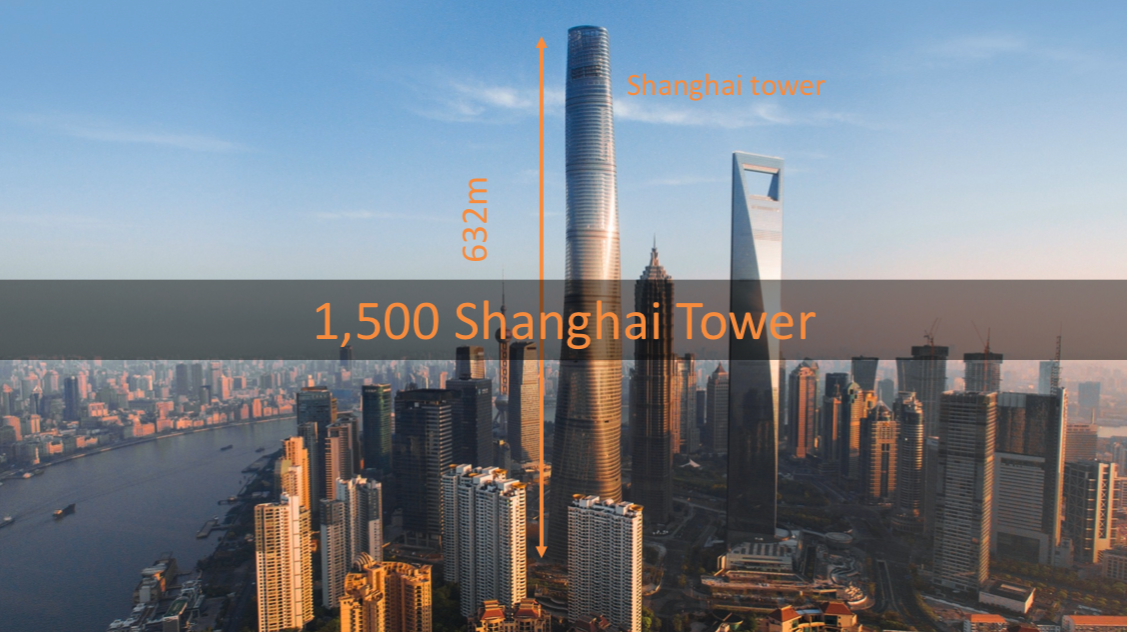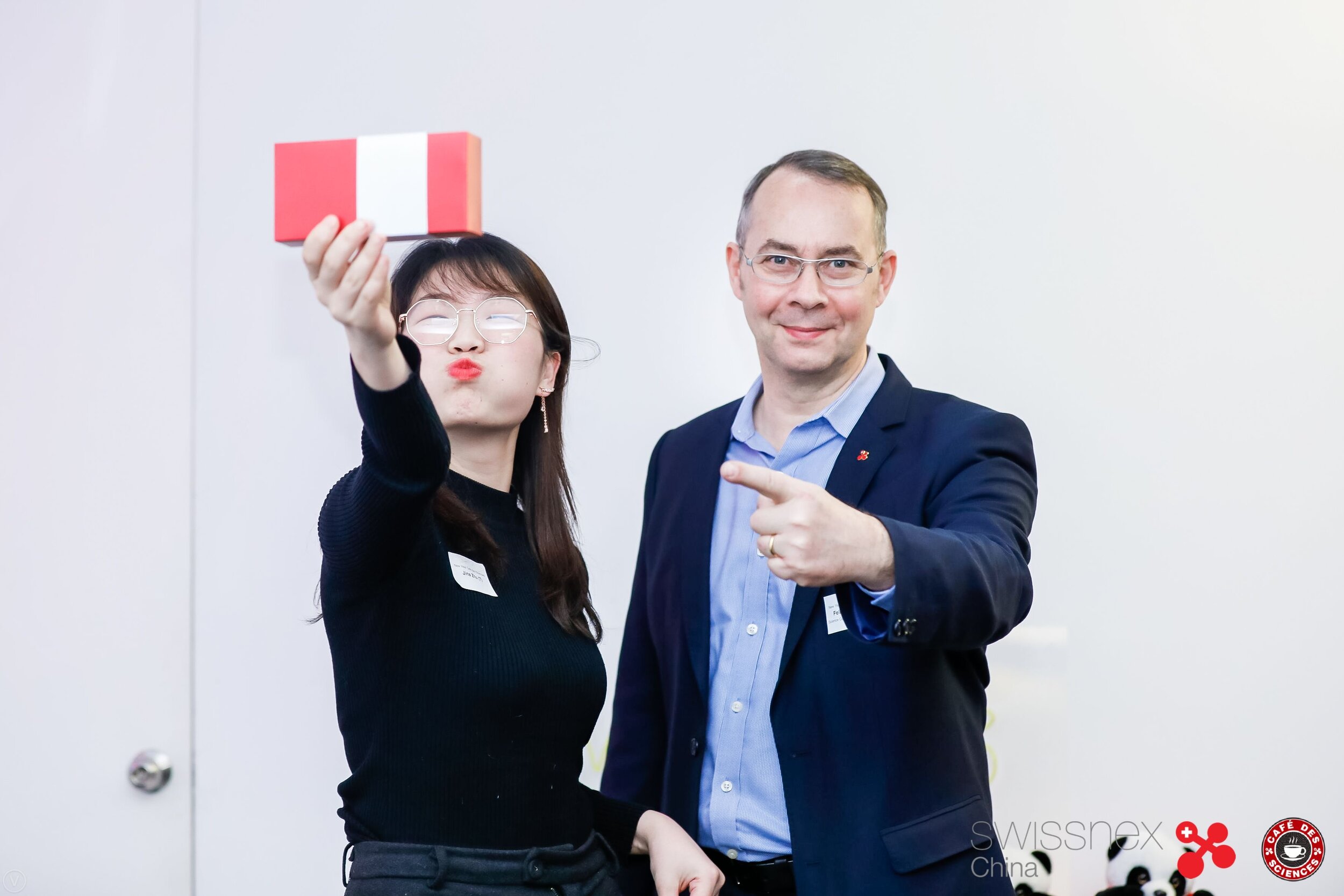By Percy Chen, Junior Project Manager Art-Science
All of past Café des Sciences lecture event pages
Started exactly one year ago in January 2019, Café des Sciences is a format at swissnex China offering a monthly platform for scientists, start-ups, and artists with Swiss background to present their projects and connect with the local community. The lectures aim to provide a casual setting in which speakers can present their works and engage with the attendees in meaningful manners.
Twelve months later, the Café des Sciences series has garnered a solid track record — 12 events at 5 unique venues, 480 total attendees with 80 plus core community members, as well as 20 speakers on novel topics ranging from shadow banking, drone revolution, to VR, biosensors, and smart home technologies.
Therefore, on 9 January 2020, to formally wrap up a year worth of content and celebrate its success, the New Year Café des Sciences featured multiple past speakers for their project updates, a keynote presentation from Enwise CEO Stéphane Vernède, a live performance from Passepartout Duo, and a community award for those who have voluntarily shared their ideas, expertise, and time with this diverse and interactive group of people.
Past speakers presented in the New Year event include Ying Liu, Assistant Professor, Shanghai University of Finance and Economics and Alumna HEC Lausanne (Café des Sciences #1: Shadow Banking in China); Laurent Coulot, Co-founder and CEO of Insolight, a startup based at the EPFL Innovation Park in Lausanne, Switzerland (Café des Sciences #3: Looking Beyond the Horizon); Hao Hua, Associate Professor, Architecture at Southeast University, Doctor of Science ETH Zurich (Café des Sciences #7: From Architectural Anthropology to Digital Fabrication); Laura Couto Rosado, Swiss Artist and Designer, 2017 Residency at the European Organization for Nuclear Research (Café des Sciences #8: Technical Spiral that We Inspire) and Xueying Mao, Biomedical Engineering Master ETH Zurich, Chief Representative of rqmicro AG China Office (Café des Sciences #10: Lives in Our Water).
From left to right: Enwise CEO Stéphane Vernède; Percy Chen, Junior Project Manager at swissnex China; Cissy Sun, Head of Art-Science at swissnex China; Christopher Salvito from Passepartout Duo; and Felix Moesner, Science Consul & CEO at swissnex China
Ying Liu, Assistant Professor, Shanghai University of Finance and Economics and Alumna HEC Lausanne (Café des Sciences #1: Shadow Banking in China)
Laura Couto Rosado, Swiss Artist and Designer, 2017 Residency at the European Organization for Nuclear Research (Café des Sciences #8: Technical Spiral that We Inspire)
After the updates from previous speakers, Stéphane Vernède, CEO at Enwise, shared the mechanism behind modular digester for organic waste: dry anaerobic digestion technology OSCAR and a real time IoT monitoring technology OTTO. His presentation really puts the issue of waste processing into perspective. For example, in 2018, China has produced 1,000,000,000 tons of organic waste, amounting to 1,500 Shanghai Tower put together in volume. In Shanghai alone, 9,500 tons of municipal organic waste are produced daily. Today we barely have the capacity to process the first 1,000 tons of waste. What is good, however, is on 1 July 2019, Shanghai has enforced waste sorting policy, taking its first step towards this serious matter.
“China’s war on trash is the world’s too.” concluded Stéphane after a long Q&A session where many people demonstrated strong interests in Enwise’s technology and waste processing issue in general.
Stéphane Vernède delivering the introduction
One of Stéphane’s slides showing the amount of organic waste China produces yearly.
Another slide on OSCAR and OTTO technologies
Christopher Salvito during his live performance
The next speaker is Christopher Salvito from Passepartout Duo, a music group comprised of himself and pianist Nicoletta Favari. The musical events they create focus on reconsidering the modalities in which people listen to and connect with music and are cast from a wide range of aesthetics and disciplines. Their mission is to become ambassadors for contemporary music through performance, to cross cultural and aesthetic boundaries through interdisciplinary projects, and to be catalysts for the global mobility of art and artists.
Christopher went into details about their experience in North America and Europe: over a dozen artistic residency programs in USA, Canada, Italy, Spain, Lithuania, Finland, Iceland, and more nations. Their extensive travel gave them rich opportunities to collaborate with all different kinds of artists, such as dancers, visual artists, animators, as well as other musicians and composers. Recently, Passepartout Duo has done residency programs at Dimensions Art Centre in Chongqing, T3 Art District in Beijing, and currently they are among the artists in residence at the Swatch Art Peace Hotel in Shanghai.
As We Speak, the snare drum solo Christopher performed focuses on the relationship between recorded voice and music. A machine-like monotone female voice plays in the background, introducing itself as “Vicky”. At first, it speaks coherently, announcing its joy to be the chosen voice. Yet, very soon it realizes as the musical piece comes to an end, it too will cease to speak. It starts to glitch, producing repetitive noises, affirming itself, “I am alive”, and questioning itself right after, “Am I alive? Am I a live?” The 5-minute piece ends with prolonged reiterations of “Stop speaking”. The cold, monotone voice gives the statement a nebulous meaning. Is it questioning whether or not it will stop speaking? Is it lamenting the fact that it will stop speaking? Does it accept its fate towards the end? It is up to the audiences for interpretation.
Likewise, Christopher plays snare drum alongside the voice. Using drumsticks, jazz brush, snare string and his fingers, he compliments the voice with different timber and volume of sounds. The interaction between Christopher and the voice creates a constant feedback loop where one listens and reacts to the other, forming a true cybernetics system.
Christopher Salvito introducing his trips in Europe
Finally, the event finished with multiple community awards. As mentioned before, Café des Sciences lecture has gathered a solid core community. We wanted to award those who voluntarily contributed their time with us through constant participations. The award winners are Zhenyu Peng (10 CdS attended), Xueying Mao (7 attended), Jina Zhu (7), and John Evans (6). We would like to thank you for sticking with us and shaping this series for the better!
Felix Moesner, Science Consul & CEO at swissnex China, and John Evans with his community award
Felix Moesner, Science Consul & CEO at swissnex China, and Jina Zhu with her community award and iconic gesture
The New Year Café des Sciences started this year on a high note. In 2020, we plan to keep the current format of Café des Sciences and bring in more engaging topics. Thank you again for all those who have been involved in this project!
Stay tuned for the next event!
(For more event pictures from the night, please click here.)
























